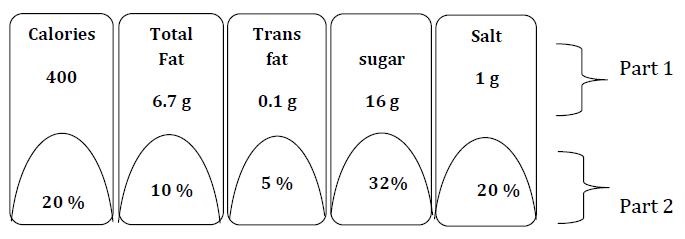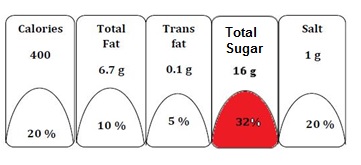|
|
|
You can get e-magazine links on WhatsApp. Click here
|
|
|
|
|
|
FBOs must declare labelling of foods with GE ingredients, states FSSAI
|
|
Tuesday, 17 April, 2018, 08 : 00 AM [IST]
|
|
Ashwani Maindola, New Delhi
|
FSSAI’s draft on labelling regulations has made it mandatory for food business operators (FBOs) to declare the labelling of genetically-engineered (GE) or modified (GM) foods, adding that all food products having five per cent or more genetically-engineered ingredients shall be labelled. The total GE ingredients shall be of the top three ingredients in terms of their percentage in the product. The labelling shall read, “Contains genetically-modified organisms (GMO)/Ingredients derived from GMO”.
FSSAI has also defined high fat, sugar and salt (HFSS) foods as processed food products having high levels of total fat or trans-fat or total sugar or salt under the draft regulations released related to labelling regulations.
The draft said, “The declared values of these ingredients are such that the product; does not satisfy the value of energy (kcal) from total sugar less than 10 per cent of total energy, or energy from trans fat less than one per cent of total energy; or has total fat or sodium above the thresholds specified under Schedule–I of these regulations.”
Schedule-I defined the nutrients threshold for food categories of total fat per 100g/ml and sodium per 100g/ml. The FBOs needs to label their product, according to the new norms prescribing the details once the draft is accepted and made into a final regulation.
According to the draft, the following information shall be declared on the front of pack: the name of food; declaration regarding vegetarian or non-vegetarian; per serve contribution of energy, total-fat, trans-fat, total sugar and salt (sodium chloride) to the recommended dietary allowance (RDA) as per the format indicated below:

Part-I: Declares the amount of energy, total fat, trans fat, total sugar and salt (sodium chloride) per serve;
Par-II: Declares the per serve percentage contribution to RDA as provided under Regulation 4.2 (3) (b);
The block(s) of nutrient(s) for high fat, sugar and salt (HFSS) food shall be coloured red as depicted below, in case the value of energy (kcal) from total sugar is more than 10 per cent of the total energy (kcal) provided by the 100g/100ml of the product; the value of energy (kcal) from trans-fat is more than one per cent of the total energy (kcal) provided by the 100g/100ml of the product; and total fat or sodium content provided by the 100g/100ml of the product is more than the threshold values as specified in Schedule–I.

According to the draft, nutritional information per 100g or 100ml of the product and per serve percentage contribution to RDA calculated on the basis of 2,000 kcal energy, 67g total fat, 2g trans-fat, 50g total sugar and 5g salt (sodium chloride) requirement for the average adult per day, shall be given on the label containing the following:
(i) Energy value (kcal);
(ii) The amounts of
(A) Protein (g);
(B) Carbohydrates and sugars (g);
(C) Total fat (g), saturated fat (g), trans-fat (g) and cholesterol (mg); Provided that the amounts of saturated fat and trans-fat may be declared on the label as not more than.
(D) Salt (sodium chloride)
FSSAI explained that serving or serve size means an amount of food customarily consumed per eating occasion or as defined on the label which is expressed in metric unit. Additionally, it may also be given in common household measures like teaspoon, tablespoon and cup that is appropriate to the food.
However, food for catering, hospitals, restaurants and food service vendors are exempted from this along with food made of single ingredients like sugar, jaggery, salt, spices, non-nutritive products, like coffee, tea and packaged fresh fruits and vegetables, seafood, etc.
Under the draft, the calculation of energy
The amount of energy to be listed should be calculated by using the following conversion factors:
(A) Carbohydrates: 4kcal/g
(B) Polyols except erythritol: 2kcal/g
(C) Erythritol: 0kcal/g
(D) Protein: 4kcal/g
(E) Fat: 9kcal/g
(F) Alcohol (ethanol): 7kcal/g
(G) Organic acid: 3kcal/g
“Nutritional information may additionally be provided in the form of bar code/global trade identification number (GTIN),” said the draft.
The draft also prescribed for the FBOs a green-coloured filled triangle inside a square with a green outline for vegetarian products,

and brown-coloured filled circle inside a square with a brown outline for non-vegetarian products with specified size.

Further the draft also prescribed a black-coloured cross inside a square with black outline, having the sides of square for food material not meant for human consumption.

The draft says declaration regarding vegetarian or non-vegetarian shall also be prominently displayed as provided in this regulation on the pamphlets, leaflets and advertisements in any media.
On date marking, the draft said, “Date of manufacture or packaging and expiry/use by shall be declared on the label. Besides, the expression best before may also be used as optional or additional information.
“In case of imported food, the country of origin of the food shall be declared on the label of food imported into India. When a food undergoes processing in a second country which changes its nature, the country in which the processing is performed shall be considered to be the county of origin for the purposes of labelling,” it added.
The draft also prescribed the principal display panel and stated that the area of principal display panel shall not be less than 40 per cent in case of reactangular and cylinderical packages while 20 per cent of other shapes.
And for organic products, the logo of Jaivik Bharat and for fortified food, the food product should bear their respective logos.
Charu Mathur, advocate, Supreme Court, analysed the draft and commented, “The date of manufacturing, date of packaging and best before is a good idea. In Regulation 4.2.3 (c ), the exceptions are too broad. They need to be tightened and nutritional information should be provided in all cases.”
She, however, pointed out that FSSAI needed to explain how it would be implementing the whole regulations.
|
|
|
|
|
|
|
|
|
|